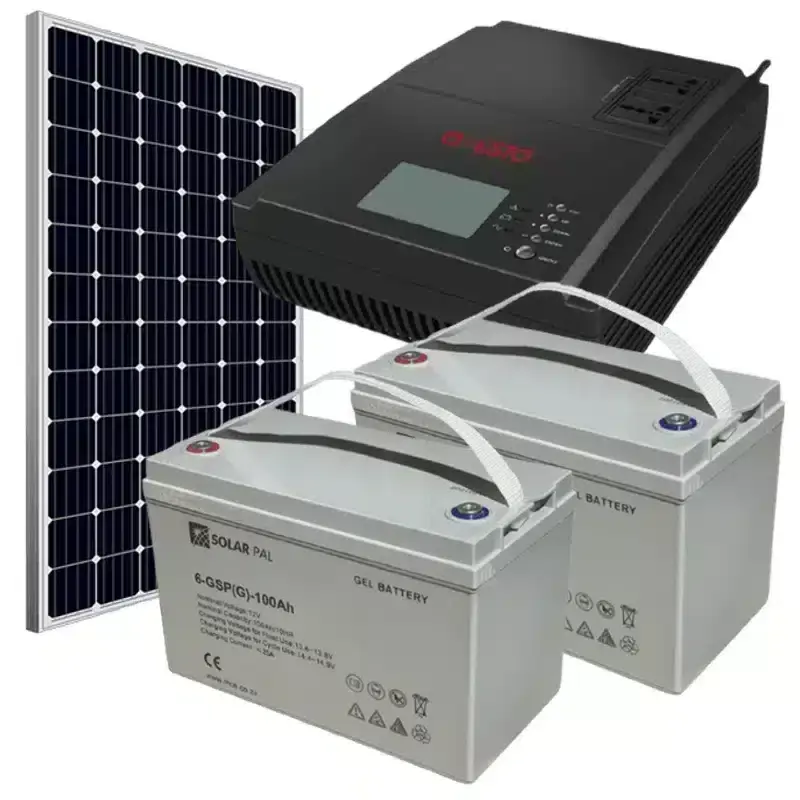The demand for solar energy has surged over the past few decades, driven by concerns about the environment and the rising cost of traditional energy sources. As part of this shift, solar batteries have become an essential technology, allowing homeowners to store excess solar energy for use when the sun isn’t shining. In this article, we’ll take a look at how solar battery prices have evolved over time and explore what the future holds for this increasingly important technology.
1. Early Years: The High Cost of Solar Batteries
When solar battery cost first entered the market, they were primarily a luxury item for the wealthy or environmentally conscious early adopters. In the late 20th century, energy storage technology was still in its infancy, and costs were prohibitively high. For example, in the early 2000s, a typical solar battery system could cost upwards of $15,000 to $20,000, and the batteries themselves were often bulky, inefficient, and had short lifespans.
During this time, the solar industry was still largely dependent on government incentives and subsidies to make systems more affordable. However, even with these incentives, the initial investment was still a major barrier for most consumers.
2. The 2010s: Innovation and Declining Prices
The 2010s marked a turning point for solar energy and energy storage. Technological advances and increased competition among manufacturers helped drive down the cost of solar batteries. A major breakthrough came with the introduction of lithium-ion battery technology, which offered several advantages over older lead-acid batteries, including higher energy density, longer lifespans, and more efficient charging.
In 2015, Tesla made waves in the industry with the release of its Powerwall battery, which became a game-changer for residential solar energy storage. At the time, the cost of a Tesla Powerwall battery system was approximately $3,000 to $3,500, a significant reduction compared to earlier systems. This was just the beginning of a broader trend towards more affordable and efficient solar batteries.
By 2018, the average price for a solar battery had dropped to around $6,000 to $8,000, depending on the capacity and brand. Many homeowners were beginning to see the value of adding energy storage to their solar systems, especially as electricity rates continued to rise and more regions began to experience grid instability and power outages.
3. The Present Day: Increased Accessibility and Variety
As of the mid-2020s, solar battery prices have continued to decline, with many systems now available in the $5,000 to $10,000 range. The price drops can be attributed to several factors:
- Manufacturing Scale: As the demand for solar batteries has grown, manufacturers have scaled up production, which has helped lower costs.
- Technological Improvements: Innovations in battery chemistry and energy management software have led to more efficient and longer-lasting batteries.
- Government Incentives: Federal and state-level rebates and incentives have made solar batteries more affordable for homeowners.
The result is a much wider range of options for consumers. Solar batteries are now available in a variety of sizes and price points, allowing homeowners to select systems based on their specific needs and budgets. Brands like Tesla, LG Chem, Sonnen, and Enphase have become household names, offering reliable and efficient energy storage solutions.
4. The Future of Solar Battery Prices
Looking ahead, the future of solar batteries and prices is optimistic. Several factors suggest that prices will continue to fall, making energy storage solutions more accessible to a broader audience:
- Improved Technology: Ongoing research into solid-state batteries, flow batteries, and other advanced technologies could further reduce the cost of solar batteries while improving performance.
- Economies of Scale: As more consumers adopt solar energy and battery storage, manufacturers will benefit from economies of scale, leading to lower production costs.
- Increased Competition: The rise of new entrants into the market will likely spur competition, driving prices down and innovation up.
Some industry experts predict that by 2030, the cost of solar batteries could fall by as much as 50%, making them a more common feature of residential solar systems.
5. Conclusion
Solar battery prices have evolved dramatically over the past few decades, driven by technological advancements, economies of scale, and increased competition. While the early days of solar battery adoption were marked by high costs and limited options, today’s consumers have a wide range of affordable and efficient energy storage solutions to choose from. Looking ahead, we can expect continued price reductions and technological improvements, making solar batteries an even more attractive option for homeowners seeking to maximize their solar energy investment.
